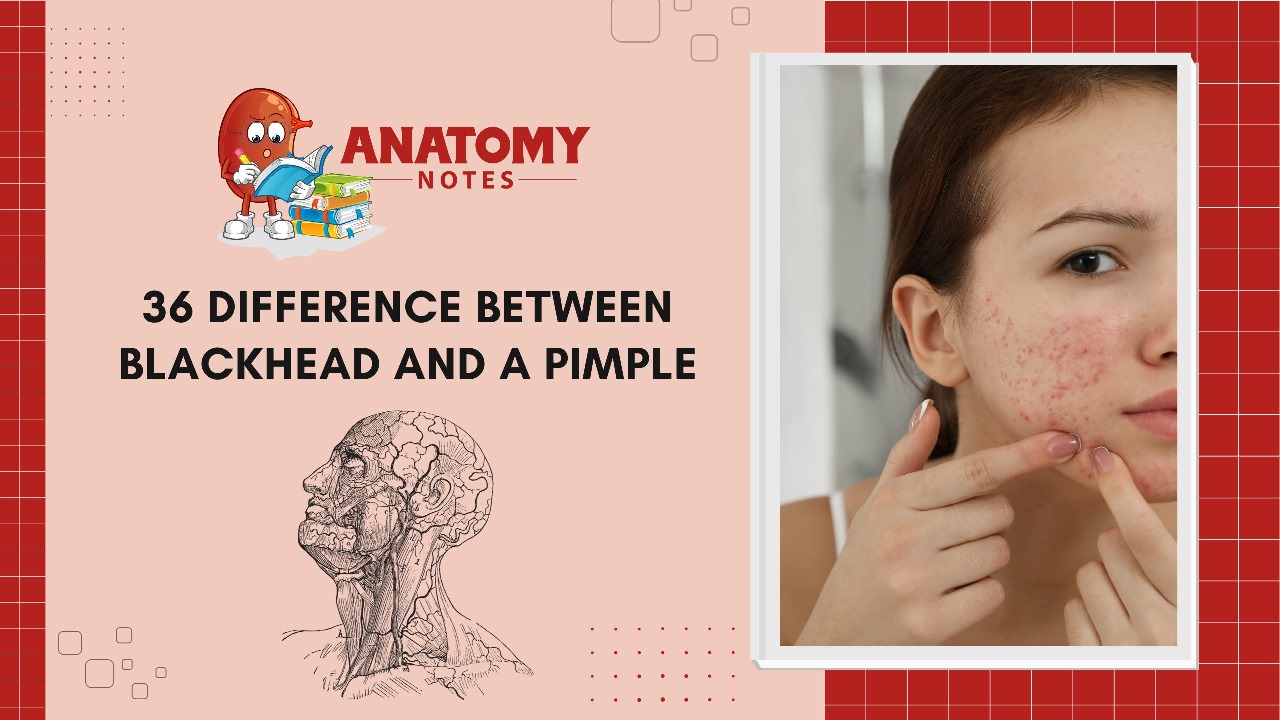Many individuals have blackheads and pimple, although they are very different in appearance, aetiology, and treatment. These differences are essential for good skincare and blemish treatment.
Blackheads, sometimes called open comedones, are tiny, black skin patches. Sebum (oil) and dead skin cells block hair follicles, causing them. Rather than debris, plugged pores oxidise melanin pigment, making blackheads dark. Non-inflammatory blackheads seldom produce redness or discomfort. Gently pressing or using salicylic acid or benzoyl peroxide skincare products helps remove them off the nose, chin, and forehead.
Bacteria like Propionibacterium acnes invade blocked hair follicles, causing pustules or papules, or pimples. Redness, swelling, and pus-filled pimples are noticeable. Untreated, they can be painful and scar. Hormones, stress, and skincare products can cause pimples on the face or body.
Basically, blackheads and pimple differ in appearance, causes, and treatment. Non-inflammatory blackheads are caused by blocked pores with sebum and dead skin cells. However, bacterial infection in blocked follicles causes pimples, which are red, swollen, and pustular. For blackheads, exfoliating chemicals and gentle extraction work well, whereas pimple may need antimicrobial treatments and should be treated carefully to avoid scarring.
|
S.No. |
Aspect |
Blackhead |
Pimple |
|
1 |
Definition |
Non-inflammatory plug in a pore |
Inflammatory skin lesion |
|
2 |
Appearance |
Small, dark or black dot on skin |
Red, swollen bump on the skin |
|
3 |
Type |
Comedonal acne |
Inflammatory acne |
|
4 |
Contents |
Sebum and dead skin cells |
Pus, bacteria, and dead skin cells |
|
5 |
Color |
Black or dark brown |
Red or pink |
|
6 |
Pain |
Usually painless |
Can be painful or tender |
|
7 |
Causes |
Clogged pores, excess oil |
Bacterial infection, clogged pores |
|
8 |
Extractions |
Easily extracted with tools |
May require professional draining |
|
9 |
Location |
Common on the nose and T-zone |
Can appear anywhere on the body |
|
10 |
Visibility |
Open pore, contents exposed |
Closed pore, contents trapped |
|
11 |
Treatment |
Topical treatments, exfoliation |
Topical treatments, antibiotics |
|
12 |
Scarring |
Rarely leads to scarring |
May leave scars if squeezed |
|
13 |
Risk of Infection |
Lower risk of infection |
Higher risk of infection |
|
14 |
Duration |
May persist for a long time |
Can resolve faster or last longer |
|
15 |
Causative factors |
Excess sebum production, hygiene |
Hormonal changes, bacteria, hygiene |
|
16 |
Prevention |
Good skincare and exfoliation |
Good hygiene, avoiding squeezing |
|
17 |
Appearance under skin |
Superficial, closer to the surface |
Deeper within the skin |
|
18 |
Redness |
Minimal to none |
Prominent redness |
|
19 |
Swelling |
Rarely associated with swelling |
Often accompanied by swelling |
|
20 |
Common age group |
Common in teenagers and adults |
Common in teenagers and adults |
|
21 |
Risk of spreading |
Rarely spreads to other areas |
Can spread if not managed |
|
22 |
Popular names |
“Open comedones” |
“Pustules” or “zits” |
|
23 |
Appearance change over time |
May stay relatively unchanged |
Can evolve and change appearance |
|
24 |
Commonly treated with |
Salicylic acid, benzoyl peroxide |
Topical antibiotics, benzoyl peroxide |
|
25 |
Appearance in mirror |
Noticeable in close-up mirror |
Often visible without close inspection |
|
26 |
Texture |
Rough, raised surface |
Softer, more tender to touch |
|
27 |
Common misconceptions |
Dirt in pores |
Squeezing helps get rid of it |
|
28 |
Risk of scarring |
Low |
Moderate to high |
|
29 |
Inflammatory response |
Minimal |
Prominent inflammation |
|
30 |
Development speed |
Slow development |
May develop rapidly |
|
31 |
Relation to acne |
Subset of acne |
Common type of acne |
|
32 |
Cosmetic concerns |
May not be as cosmetically concerning |
Often a cosmetic concern |
|
33 |
Hormonal influence |
Less influenced by hormones |
Hormones can trigger outbreaks |
|
34 |
Comedone visibility |
Comedone is visible on the skin |
Comedone is often hidden beneath |
|
35 |
Self-treatment |
Can be safely treated at home |
May worsen with improper squeezing |
|
36 |
Medical intervention |
Rarely requires medical attention |
May require medical treatment |
Frequently Asked Questions (FAQs)
Q1: Causes of blackheads and pimples?
Excess sebum and dead skin cells restrict hair follicles, causing blackheads. The dark colour of blackheads comes from melanin oxidation in occluded pores. Bacteria like Propionibacterium acnes invade blocked hair follicles to cause inflammation and pimples. Stress, hormones, and skincare products can also cause pimples.
Q2: How can I distinguish between a blackhead and a pimple?
Blackheads are little, black patches on the skin that don’t hurt or itch. However, pimples are red, swollen, and pus-filled. Blackheads have a black dot or plug in the centre, whereas pimples have a raised, painful bump with pus.
Q3: Can I cure blackheads and pimples at home?
Both blackheads and pimples are treatable at home. OTC skincare products like salicylic acid or benzoyl peroxide can clear pores and treat blackheads. Although gentle, extraction should be done carefully to avoid skin damage. Benzoyl peroxide or topical antibiotics may treat pimples. Avoid squeezing or plucking pimples to prevent irritation and scarring.
Q4: When should I seek professional help for blackheads and pimples?
If over-the-counter remedies don’t work for severe blackheads or pimples, see a specialist. They can treat obstinate blemishes with stronger prescriptions and treatments like chemical peels or extractions. Fever or increased inflammation are indicators of infection, so seek medical assistance.
Q5: Can blackheads and pimples be prevented?
Keep your skin clean, exfoliated, and moisturised to avoid blackheads and pimples. Avoid clogged pores using non-comedogenic products and excellent cleanliness. Stress management and a good diet may also cleanse skin. Consult a doctor if hormonal changes are an issue. Last, avoid touching your face too much, which can spread dirt and bacteria.




